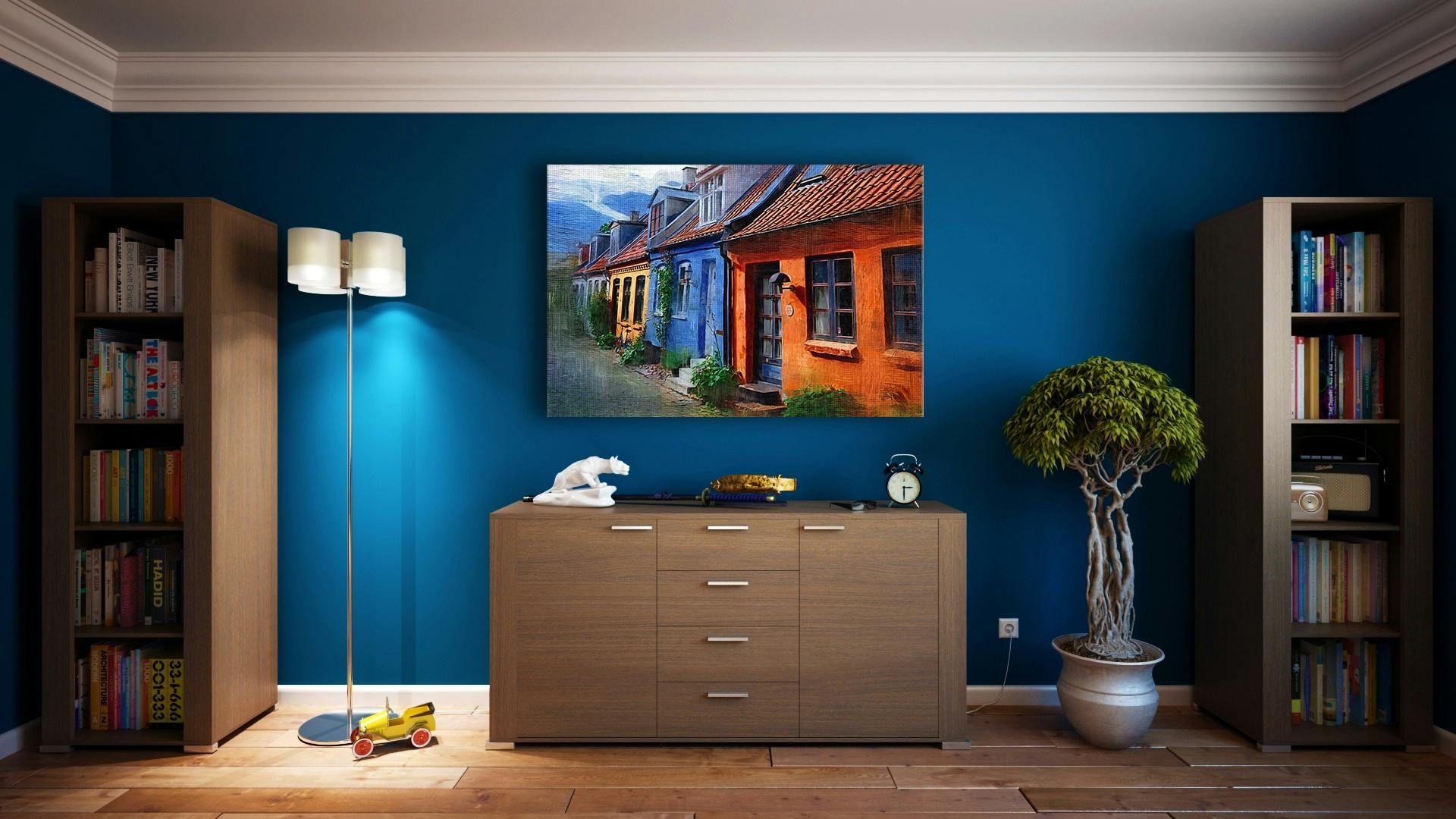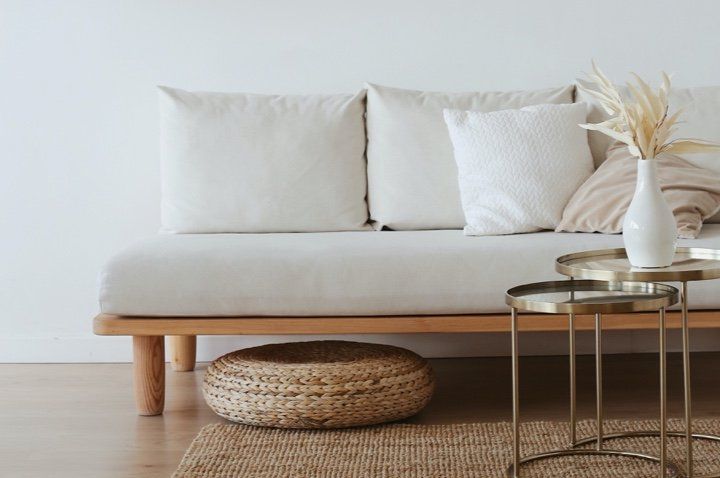Choosing the right colours.

When it comes to decorating your home, colour is one of the most powerful tools at your disposal. The colours you choose can profoundly affect the mood and ambience of your living spaces, influencing how you feel in each room. Understanding the psychology of colour and how to select the right palette can transform your home into a sanctuary that reflects your personality and meets your needs. In this blog, we will explore how different colours affect mood and ambiance, along with practical tips for selecting the perfect colour scheme for your home.
The Psychology of Colour
Colours can evoke a wide range of emotions and responses. Here are some common associations with specific colours:
Red:
A bold and energising colour that can increase feelings of passion and excitement. It’s often used in dining areas to stimulate appetite and conversation but can be overwhelming if overused.
Blue:
Known for its calming and soothing qualities, blue can help create a tranquil environment. It is ideal for bedrooms and bathrooms where relaxation is key. Lighter shades, like sky blue, can make a room feel open and airy.
Green:
A colour that represents nature, green promotes feelings of balance and harmony. Soft greens are perfect for living rooms and home offices, encouraging a sense of calm and focus.
Yellow:
Bright and cheerful, yellow can bring warmth and joy to a space. It’s a great choice for kitchens or play areas, but too much yellow can lead to feelings of agitation, so it’s best used as an accent.
Neutral Colours:
Whites, beiges, and grays create a clean backdrop that allows for versatility and easy coordination with furnishings and decor. Neutrals can make spaces feel larger and more open but can also feel cold if not complemented with warmer accents.
Tips for Selecting the Perfect Palette
Consider the Purpose of Each Room: Each room in your home serves a different purpose and should evoke the appropriate feelings. Think about how you want to feel in each space. For instance, choose calming colours for bedrooms and energising hues for exercise rooms.
Start with Inspiration:
Gather inspiration from various sources, such as magazines, websites, or social media platforms like Pinterest and Instagram. Look for images that resonate with you and note the colours that stand out.
Use Colour Swatches:
Buy sample paint pots or swatches from a home improvement store. Test colours on small sections of your walls to see how they look at different times of the day and under various lighting conditions.
Create a Cohesive Flow:
Consider how colours flow from one room to another, creating a harmonious transition throughout your home. While each room can have its unique colour scheme, maintaining a cohesive palette can unify your spaces.
Balance with Accents:
If you're drawn to bold colours, consider using them as accents rather than the primary colour. This approach allows you to add personality to your home without overwhelming the senses. For example, a bright sofa or striking artwork can serve as focal points against a more neutral background.
Pay Attention to Lighting:
Natural and artificial light can greatly influence how colours appear. Rooms with plenty of natural light may benefit from darker shades, while dimly lit spaces often require lighter hues to create brightness.
Seek Professional Help if Needed:
If you feel overwhelmed by the choices or uncertain about what will work best, don’t hesitate to consult a professional decorator. They can offer invaluable insights tailored to your specific space and style.
Choosing the right colours for your home is essential in creating an environment that reflects your personality and enhances your well-being. By understanding the psychological impact of colours, considering the purpose of each room, and experimenting with different palettes, you can curate a space that feels harmonious and inviting. Take your time, have fun with the process, and remember that your home is a personal canvas waiting to be filled with colour and life. Happy decorating!

Lighting plays a crucial role in setting the mood and functionality of any room. When selecting the right lamp, it’s important to consider various factors that will not only enhance the aesthetics of your space but also meet your practical needs. Here’s a comprehensive guide to help you choose the perfect lamp for your room. 1. Assess Your Lighting Needs Before you start shopping, consider what you want to achieve with your lamp. Are you looking for task lighting to illuminate a workspace, ambient lighting to create a warm atmosphere, or accent lighting to highlight specific features in your room? Understanding your lighting requirements will help narrow down your options. 2. Determine the Style of Your Room The lamp you choose should complement the existing décor of your room. Consider the overall style—whether it’s modern, traditional, eclectic, or minimalist—and select a lamp that fits. A sleek, contemporary lamp can enhance a modern setting, while a vintage or ornate lamp may suit a more traditional space. Pay attention to colours and materials as well; for instance, a brass lamp can add a touch of elegance to a classic room, while a bold, coloured lamp can serve as a statement piece in a contemporary setting. 3. Consider Size and Scale The size of the lamp is crucial for ensuring it fits well within the room. A large lamp may overwhelm a small space, while a tiny lamp might get lost in a large room. As a general rule, the height of a table lamp should be about 145 to 165 cm from the floor to the bottom of the shade when placed on a side table. For floor lamps, choose a height that complements your furniture. Remember, proportion is key to achieving harmony in your décor. 4. Choose the Right Shade The lampshade is not only a vital element of design but also affects the quality of light emitted. Shades come in various materials, colours, and shapes. A translucent shade can create a soft, diffused glow, while an opaque shade will provide more focused light. Consider the ambience you wish to create and how different shades can influence the room’s overall mood. 5. Matching Lamp Types to Activities Different activities require different lighting solutions. For reading or working, select lamps with adjustable brightness or directed light, such as a swing-arm floor lamp. For general lighting, consider using a lamp with a wider shade that distributes light evenly, providing a warm and inviting glow. Ensure that your chosen lamp suits its intended use. 6. Consider Bulb Options The type of light bulb you use can dramatically affect the ambience of your room. LED bulbs are energy-efficient and long-lasting, while incandescent bulbs provide a warm, traditional glow. Consider dimmable bulbs for added flexibility; they allow you to adjust the brightness based on the time of day and the mood you want to create. 7. Placement Matters Finally, think about where you will place your lamp. Each room has specific requirements for lighting placement. For instance, bedside lamps should be easily accessible and within reach for convenience, while floor lamps can be strategically placed to illuminate darker corners. Aim for symmetry in your arrangements for a balanced look, and ensure that the lamp doesn’t obstruct pathways or furniture. Conclusion Choosing the right lamp for your room is a thoughtful process that takes into consideration your lighting needs, style preferences, and the practical use of space. By assessing these factors, you can select a lamp that not only enhances your interior décor but also creates a comfortable and inviting atmosphere. Whether you’re revamping a single room or decorating your entire home, remember that the right lighting can make all the difference. Happy decorating!

The living room is often considered the heart of the home—a space for relaxation, entertainment, and gathering with loved ones. Choosing the right colour scheme for this important room can set the mood and create a welcoming environment. With so many options available, it can be overwhelming to decide on the perfect palette. Here’s a step-by-step guide to help you choose the ideal colour scheme for your living room.





